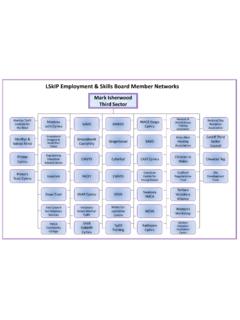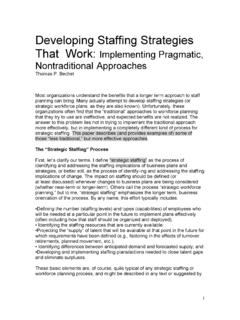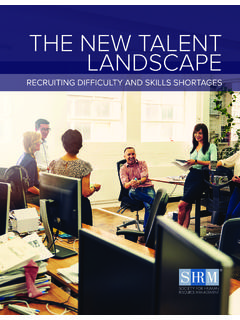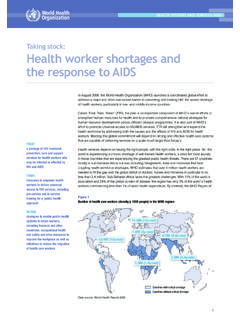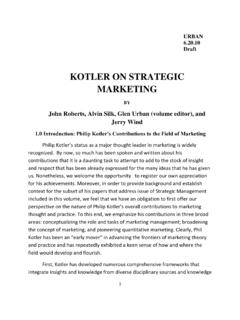Transcription of Cardiff Capital Region Employment & Skills Plan 2017
1 Cardiff Capital Region Employment & Skills Plan 2017. Contents 1. Executive 3. Our Region .. 3. Key Challenges .. 3. Regional Priorities for Employment and Skills .. 4. Introduction and methodology .. 7. Section 1 - Regional Overview .. 9. Investment .. 9. Cardiff Capital Region City Deal .. 9. Major Investment Demands .. 10. Local Authority Capital Programme .. 11. Rail including the 11. Social Housing and 21st Century Schools and Education Programme .. 12. Valleys 12. Cardiff -Newport Tidal Lagoon .. 12. Superfast Cymru - 12. Enterprise Zones .. 12. Regional Economic Profile .. 14. Labour demand including Growth and Replacement jobs .. 17. Labour Supply .. 19. Skills Gaps and 19. Qualifications levels .. 21. Apprenticeships .. 22. Careers Mismatch .. 23. Learner outcomes .. 24. Higher Education Destination Data and Retention of Welsh Domiciled Students.
2 24. Unemployment and Economic Inactivity .. 25. Brexit and European Union Funding .. 26. European Union Funding .. 27. Priority Sectors for Employment and Skills Investment .. 30. Section 2: Priority Sector 32. Advanced Materials and Manufacturing .. 33. 41. Financial and Professional Services .. 51. 59. Human Foundational Economy Health, Social Care and Education .. 68. List of Figures Figure 1 Cardiff Capital Region Workplace Employment by Broad Industry 2015 .. 15. Figure 2 LSkIP Priority Sectors by Establishment number in Local Authorities .. 31. Figure 3 Wales GVA compared to UK by Advanced Materials and Manufacturing Sub-sector 2014 .. 33. Figure 4 Output per hour Values 1997-2015 .. 51. Figure 5 Education Workforce Council Registered Teachers Subject Taught -v- Subject Trained .. 75. Figure 6 Core Education Subjects .. 75. List of Tables Table 1 South East Wales Local Authority - Capital Programme 2016/17-2019.
3 11. Table 2 Gross Value Added by Measure, Welsh Economic Region and Year .. 14. Table 3 Company Size Workforce and Value (November 2016) .. 16. Table 4 Total Projected Employment Demand by Expansion and Replacement Jobs in the Cardiff Capital Region 2014-24 .. 17. Table 5 Density of Skill Shortage Vacancies by Occupation and Region .. 19. Table 6 Incidence and Density of Skills Gaps by Region .. 20. Table 7 Unemployment 25. Table 8 Not in Education, Employment or Training .. 26. Table 9 Cardiff Capital Region by Priority Sector GVA .. 30. Table 10 Cardiff Capital Region by Priority Sector Skills Shortage Vacancies .. 30. Table 11 NESA Nuclear Energy Skills Alliance .. 37. Table 12 Apprenticeships by Age and Level across Construction .. 48. Table 13 ICT/Digital Sector Skills .. 61. Table 14 Health Service Workforce in Wales .. 68. Table 15 Higher Education Academic/Support Staff 68.
4 Table 16 LSkIP Priority Sector Higher Education Figures .. Error! Bookmark not defined. Page 1 of 81. FOREWORD. A key driver for the Employment and Skills Board of the Learning, Skills and Innovation Partnership (LSKIP) is to be responsive and create change driven by stakeholder engagement. Identifying Employment and Skills priorities over short, medium and longer term periods that align with economic drivers and indicators to support the South East Wales regional economy. Developing the right Skills is fundamental to increasing productivity and efficiency. It provides more opportunities for all ages, genders and abilities, helping to address social and physical exclusion by improving access to Employment . We need to accept that no one person or organisation can solve the employability and Skills demands of the Region and there is a need for us to break down the silos of self-interest' to deliver a strong baseline of education, training and Skills for businesses to grow, confident that their workforce is equipped with the right Skills to meet and respond to their sector needs.
5 There is a need to create economic partnerships, by continuing to build on growing relationships between industry, education providers and Welsh Government, to develop future Skills that will ensure the South East Wales economy thrives and grows. Aligning delivery with the aspirations of the Cardiff Capital Region City Deal, Enterprise Zones, Valleys Taskforce, Welsh Government, local authorities, educators, the business community, the existing workforce and those about to enter it. Central to the development of this cohesive Employment and Skills Plan for 2017 has been the recognition that Skills and economic growth are intrinsically linked and LSkIP has over the last twelve months further established itself to respond to this. To address the need to fully understand the changing economic landscape, we have over the last year enhanced our evidence base through research and increased our employer and stakeholder engagement.
6 We have established sector cluster groups, each led by industry and connecting with representatives from the supply side. Cluster groups have identified strengths, weaknesses, opportunities and threats impacting their sectors, before agreeing a number of key priorities and recommendations. During our extensive employer engagement and particularly across the five cluster groups, LSkIP has identified that there are a number of common themes emerging; employability and soft Skills , engagement between schools and industry and digital competency. Throughout the Employment and Skills Plan we recognise that the world of work is evolving and changing at a demanding pace through digital developments across all sectors, creating increased demand for higher level Skills in the workforce to meet these changing environments. Business manages itself through the two Ps, Process and People, and with people being recognised as the greatest asset of any business organisation, it is therefore critical that we provide the right employability and Skills provision to maximise the potential of the regional economy and its growth aspirations.
7 As businesses we have a key role in working in partnership with LSklP and through our sector groups to further inform business trends, and identify value chain opportunities and Skills requirements to meet these opportunities. I urge businesses of all sizes to take a leading role and get involved with LSkIP and support the sector groups. Your input and value will help shape a Skills investment strategy that meets your needs, Page 1 of 81. delivers on innovation and enterprise and equips you with the workforce to meet the ever-changing landscape of business. We need to unite as one and build upon the strengths of the Region through positive partnership and collaboration to deliver a wide, knowledgeable, diversified and skilled workforce that allows us to grow and prosper. Leigh Hughes, Business Development & CSR Director, Bouygues UK. Chair of the South East Wales Employment and Skills Board Learning, Skills and Innovation Partnership Page 2 of 81.
8 EXECUTIVE SUMMARY. Our vision is to develop the social and economic potential of the Cardiff Capital Region , supporting people and businesses to deliver a high performing and prosperous Region that stimulates and supports local and inward investment. To achieve this the Cardiff Capital Region needs to develop a demand-led Skills system that is driven by the needs of industry and which delivers Employment and Skills support in response to infrastructure and other investments to achieve growth within the regional economy. Our Region The Cardiff Capital Region (CCR) has a population of , just under half the total for Wales. It generates more than half the total gross value added (GVA) in Wales and generates 80% of the UK. average GVA per head. The Region employs almost half of the workforce but there is a disparity between Cardiff and a more prosperous southern, coastal belt and areas in the Heads of the Valleys to the north.
9 Infrastructure and other investments through the Cardiff Capital Region City Deal, local authority and other sector's Capital programmes, Enterprise Zones and others, are key drivers of economic growth. Creating Employment and Skills opportunities by investing in, for example, road and rail infrastructure, delivering the South Wales Metro and a UK Catapult for next generation compound semi-conductor applications to build an international cluster of supply chain companies in and around the Region . An analysis of the regional economy based on value by productivity (GVA), and size of the sector1 has prioritised five sectors in the Cardiff Capital Region which are considered to have greatest demand for labour and Skills in the next five years: advanced materials and manufacturing (AMM), construction (CON), financial, legal and professional services (FPS), digital (ICT/digital) and the human foundational economy including education, health and social Care (HFE).
10 Key Challenges Raising GVA the need to develop Employment and Skills in the regional labour market that support investment strategies and achieve economic growth. Infrastructure investment in the Region (and competition from major infrastructure jobs within commuting distance) will have a substantial impact on demand for current Employment and Skills . For example, Skills shortages are forecast in a range of construction trades and more senior roles. Skills gaps and shortages projected labour demands exceed the expected numbers of entrants to the labour market creating Skills shortages whilst Skills gaps increase as the demand for Skills evolves in response to changing working methods, utilising new technology and introducing automation. The supply of labour to meet these demands is dependent on a number of factors including: i) appropriate training provision in the Region for all ages, taking into account the need to train the trainers in current and changing Skills needs.
